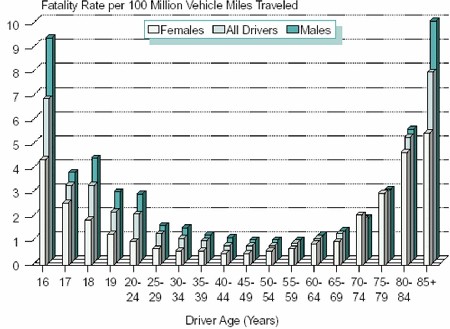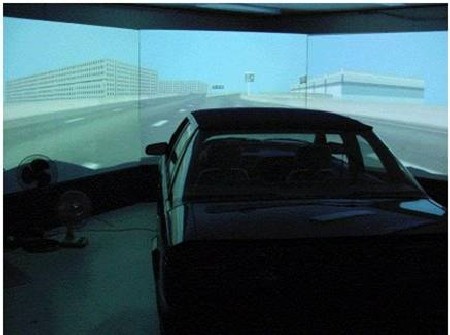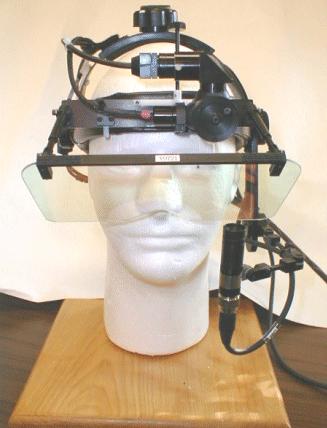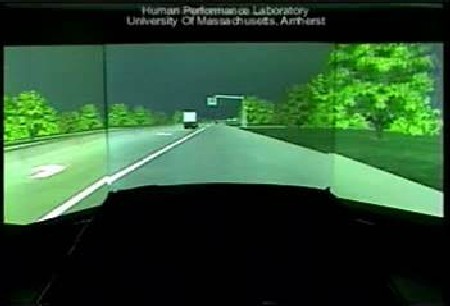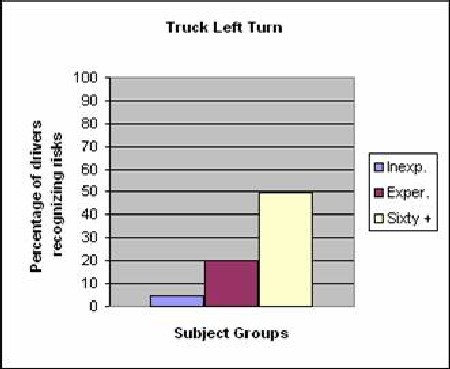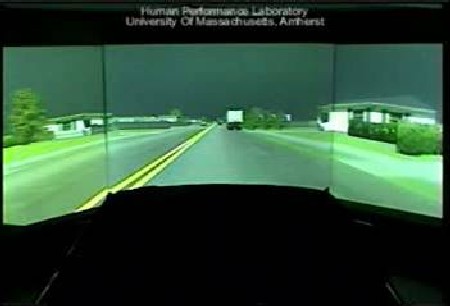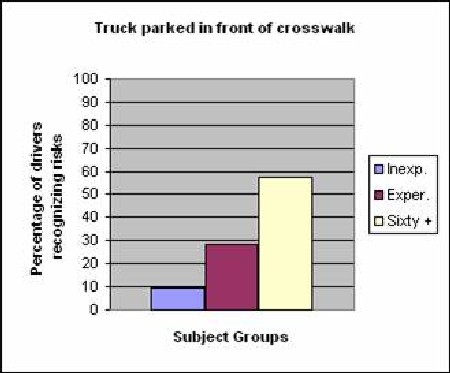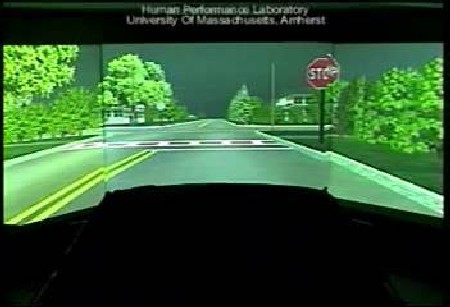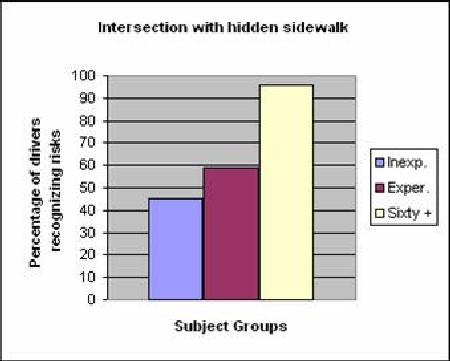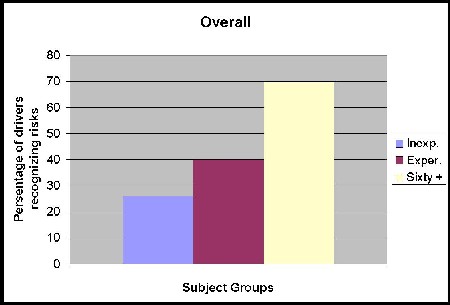|
|
|
|
|
The Use of Eye Movements to Evaluate the Effects of Driver Age on Risk Perception in an Advanced Driving Simulator
Anuj K. Pradhan, Research Assistant, Asst. Lab Manager Human Performance Laboratory
Kim R. Hammel, Graduate Research Assistant
Rosa DeRamus, Research Assistant
Alexander Pollatsek, Ph.D., Professor of Psychology
David A. Noyce, Ph.D., Assistant Professor, Associate Director Human Performance Laboratory
Donald L. Fisher, Ph.D., Professor, Director Human Performance Laboratory
Human Performance Laboratory, University of Massachusetts
220 ELAB Building, Amherst, MA 01002
Phone: (413) 545-3393
Email: hpl@ecs.umass.edu
WWW: www.ecs.umass.edu/hpl/
|
| |
|
Overview
|
|
| |
|
Introduction
- High Fatality Rates
- Frequent Explanation
- Younger, novice drivers are not as emotionally mature as their older counterparts ??
- Recent Studies
- Teenage Drivers’ abilities to acquire and assess information relevant to recognition of risks in road.
- This Study
- Comparison of scanning behavior and eye fixations of younger, novice drivers with more experienced drivers.
|
|
Experiment
- Pedestrian Crosswalk
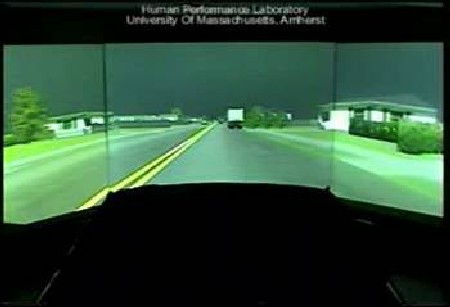
Pedestrian Crosswalk (click image to start video (4.21 MB))
- Additional scenarios can be found at www.ecs.umass.edu/hpl, Young Drivers Link
- Scenarios
- Each subject drove four blocks
- Four risky scenarios per block
- Task was to follow a lead vehicle in all the drives
- Materials
- Subjects
- 24 younger, novice Drivers in their first 6 months of driving experience (M=16.3, SD=0.4)
- 24 younger, experienced drivers, 19-25 years old (M=21.3, SD=2.2)
- 24 older, experienced drivers, 60-75 years old (M=66.9, SD=6.4)
- Pedestrian Crosswalk – Eye Movements

Pedestrian Crosswalk – Eye Movements (Note: the video was taken by the field camera below the visor of the eye tracker and therefor
is a mirror image, click image to start video (4.28 MB))
|
|
Results
|
|
Conclusions
- Across scenarios, younger novice drivers are less likely to attend to risk relevant areas.
- Implications for younger drivers training.
- Older drivers between 60 and 75 are much more likely to attend to those areas than either of the younger groups.
- Older drivers predict specific areas of high risk in a scenario.
|
|
|
|
|




